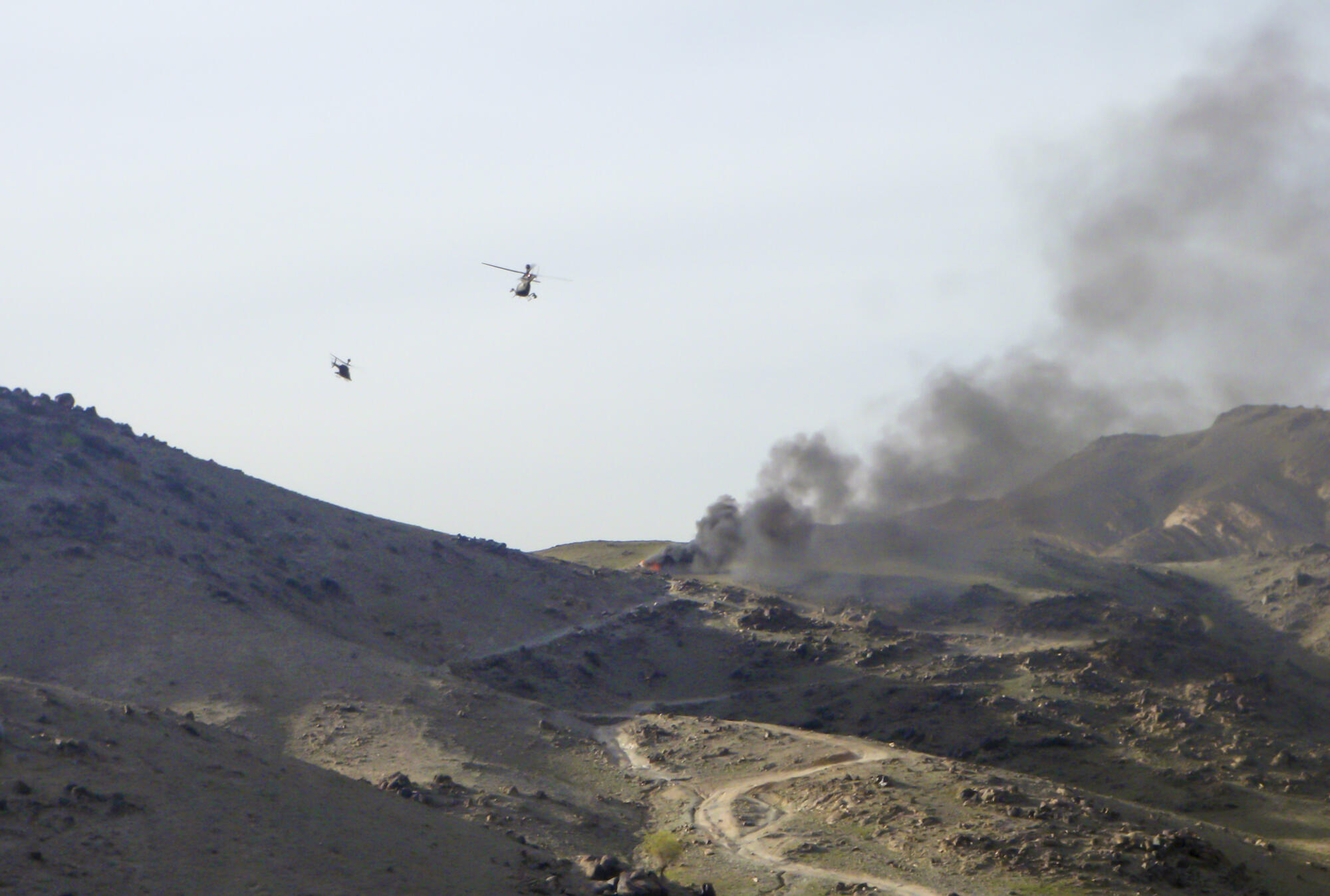
Sept. 14, 2021
What can the motivations of terrorists teach us about Afghanistan?
A new power vacuum in the country after the U.S. withdrawal may create an unstable environment ripe for increased terrorism.
Share this story
With the U.S. withdrawal from Afghanistan, a new power vacuum may create an unstable environment ripe for increased terrorism. David Webber, assistant chair of homeland security and emergency preparedness at VCU’s L. Douglas Wilder School of Government and Public Affairs, specializes in the psychology of radicalization and de-radicalization of terrorism. He spoke with the Wilder School about universal variables related to the radicalization of terrorists, his ongoing research in the field, and the situation unfolding in Afghanistan.
Radicalization and de-radicalization
There are three universal variables that apply to the radicalization of terrorists, regardless of geography and culture, Webber said: need, narrative and network.
Need refers to an individual’s desire for importance or significance in their life; narrative identifies possible ways through which significance can be attained (like using violence toward achieving political change); network includes the social conditioning and validation that comes from peer groups.
“People often join terrorist organizations or endorse violent extremism because they see it as a way to feel significant or important — to feel like it'll make their lives matter in some way,” Webber said. “And so this often drives people there, but then we also recognize that there are many different avenues that a person can take to make them feel important and significant. Embeddedness within a specific social network or exposure to extremist narratives determines if a person chooses violent or nonviolent options.”
Just as these psychological components can lead toward participation in violent groups, replacing the need, narrative and network with positive factors can help de-radicalize individuals and help them recover from terrorism, in a sense. De-radicalization doesn’t receive nearly as much attention or resources as terrorism prevention, especially in the United States — something Webber seeks to help change.

Webber has extensively researched the motivations of terrorist groups including German Neo-Nazis, the Liberation Tigers of Tamil Eelam in Sri Lanka and Islamist fundamentalism and extremism in the Philippines, Mali and Indonesia. At the Wilder School, he’s currently teaching Homeland Security 101 and Homeland Security and Emergency Preparedness 502: Survey of Terrorism.
“In my classes on terrorism, I put a lot of emphasis on domestic terrorism and a lot of those issues, because I think … the careers our students are going to be going into is dealing with these issues,” Webber said.
De-radicalization programs across the globe often include psychological counseling, vocational training, education, group therapy and family member visitations, but there are few similar initiatives incorporated domestically.
“In the United States, the average prison sentence for somebody convicted of terrorism charges is roughly 13 and a half years,” Webber said. “At some point, these prisoners will be released into society. If we want to reduce that threat even more, we want to make sure that once they're released from prison, they're no longer interested in carrying out violence.”
Researching refugees
Surveys are Webber’s primary tool, and he conducts research on populations that are at risk of participating in terrorism as well as actual terrorist members — incarcerated individuals or those who wish to leave the group of which they are a part.
In the Philippines for example, he surveyed Muslim populations that as a minority could be predisposed to feel threatened, humiliated and insignificant — all factors that could lead to an avenue of violent extremism. In Germany, he used his connections with a colleague working within the de-radicalization, or disengagement scene, to interview former Neo-Nazis.
Most recently, Webber and his colleagues researched Syrian refugees living in Lebanon, Jordan, Turkey and Iraq. His team designed surveys to explore to what extent these refugees endorsed violent, extremist Islamist beliefs, their interest in relocating to Western countries and the relationships between these variables.
“In the United States, the average prison sentence for somebody convicted of terrorism charges is roughly 13 and a half years. At some point, these prisoners will be released into society. If we want to reduce that threat even more, we want to make sure that once they're released from prison, they're no longer interested in carrying out violence.”
Webber’s surveying reveals that the popular narrative that immigrating refugees bring violence and terrorism with them is largely unfounded. Most of the refugees surveyed were more interested in returning home and those who wished to travel to Western countries were less politically and ideologically extreme in their beliefs.
“Past research has actually shown that when there is an influx of refugees to a new country, there is violence, but it's primarily violence against refugees as opposed to violence perpetrated by refugees,” Webber said.
However, continued violence against refugees can actually lead to a dangerous cycle that can radicalize their beliefs and lead to extremism. So while the targeted refugees did not come to a country with violence in mind, repeated domestic hostility can trigger such behaviors.
The situation unfolding in Afghanistan
Even as the Taliban gains control in Afghanistan, it faces competition and struggles for power with other extremist groups, like ISIS-K, which claimed responsibility for the airport bombings in Kabul last month. The abrupt removal of U.S. troops might lead to more extremism in the region, emboldening other groups, Webber said.
“The Taliban can present the current situation as them successfully removing the United States, achieving freedom after 20 years of fighting, and the plan to implement a religious government,” Webber said. “If you are somebody in the region who is like-minded and wants to live in a society without Western influence, that is run by Islamic law, you might see that as a success. And you might see that as a demonstration that this type of government is actually possible.”
This perceived victory has the potential to inspire new terrorist activity from within the United States. Individuals who aren’t necessarily part of a terrorist organization like ISIS or al-Qaida may be encouraged by the situation in Afghanistan and, subsequently, launch their own attacks domestically.
Based on his research, Webber can also envision a refugee crisis in Afghanistan, especially if the Taliban reinstates its suppressive regime against women and progressives. In that situation, Afghanistan refugees would leave the country out of fear, only to be met with hostility by neighboring countries due to resource constraints and cultural differences.
He sees the situation in Afghanistan as important for his students to be aware of and learn from, especially considering the ways in which our society gathers information.
“We all have some understanding of what terrorism is because we're exposed to it and we see it on the news,” Webber said. “But these portrayals are not always valid. And they're often very highly politicized. And so the view that we take … of terrorism may be very skewed.”
An earlier version of this story published on the Wilder School website under the headline What Can the Motivations of Terrorists Teach Us About Afghanistan?
Subscribe to VCU News
Subscribe to VCU News at newsletter.vcu.edu and receive a selection of stories, videos, photos, news clips and event listings in your inbox.










